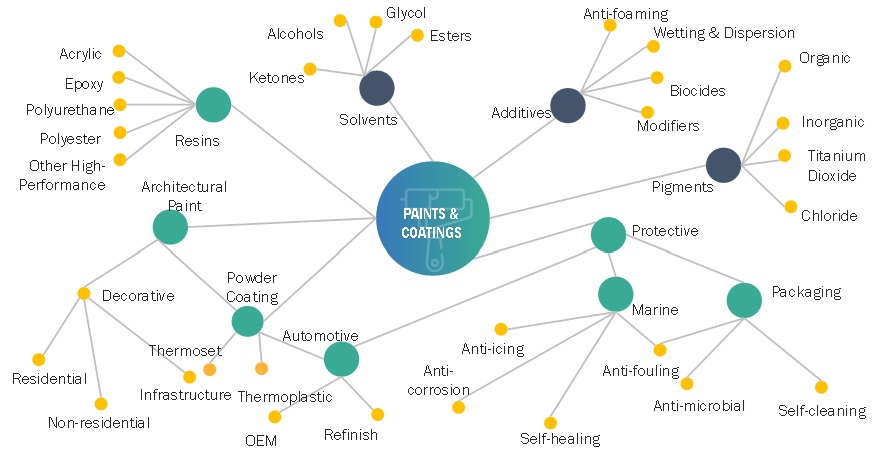Navigating the Green Wave: Sustainable Coatings, Regulations, and Eco-Friendly Solutions for a Greener Tomorrow
Coatings are ubiquitous daily, offering protection, aesthetics, and functionality to countless products and structures. However, as environmental concerns grow, the industry faces a pivotal moment in its evolution. The demand for green or sustainable coatings is gaining momentum, driven by the need to minimize the environmental impact of traditional coatings.
Sustainable coatings, often called eco-friendly or green coatings, comprise surface finishes and protective layers that prioritize environmental responsibility, safety, and resource efficiency throughout their lifecycle. These coatings are designed to minimize adverse environmental impacts, promote worker and user safety, and conserve natural resources while maintaining or even enhancing their functionality.
The global green/sustainable coatings market is projected to reach USD 156.0 billion by 2027, at a CAGR of 4.8%, between 2022 and 2027. The construction industry’s demand for environment-friendly and healthier coating systems and the rising need to improve performance, durability, and aesthetics are the key factors contributing to the growth of the sustainable coatings market. The increasing demand for renewable raw materials is expected to create growth opportunities for global market players, driving the demand for sustainable coatings during the forecast period. However, developing synthetic technologies that possess little or no toxicity to human health and the environment is a potent challenge.
Akzo Nobel N.V. (Netherlands), PPG Industries (US), Axalta Coating Systems (US), BASF SE (Germany), and The Sherwin-Williams Company (US) are the key players in the global sustainable coatings market.
Current Industry Challenges
- Environmental Impact: The most pressing challenge is the environmental impact of conventional coatings. They often contain high levels of VOCs, contributing to air pollution and harming human health.
- Regulations & Compliance: Increasingly stringent environmental regulations require the industry to reduce VOC emissions, forcing manufacturers to reevaluate their formulations and production processes.
- Performance vs. Sustainability: Balancing performance with sustainability is a significant challenge. Sustainable coatings must maintain the same level of protection and durability as their conventional counterparts.
- Raw Material Sourcing: Sourcing sustainable raw materials is challenging, as it often involves searching for eco-friendly alternatives without compromising quality.
How These Challenges Can Be Resolved:
- Innovative Formulations: Invest in research and development to create low-VOC or VOC-free coatings that perform as well as traditional coatings.
- Recycling and Waste Reduction: Focus on reducing waste by implementing recycling programs and sustainable manufacturing practices.
- Sustainable Sourcing: Collaborate with suppliers to find sustainable sources of raw materials and develop eco-friendly alternatives.
Current vs. Future of Sustainable coatings
Current Trends:
- Sustainable coatings are experiencing increasing demand due to the growing awareness of environmental concerns and the need for more sustainable industrial practices.
- Innovation in materials and technologies is driving the development of high-performance Sustainable coatings, making them increasingly competitive with traditional coatings.
- Sustainable coatings are becoming integral to the construction, automotive, and manufacturing sectors, offering durable, eco-friendly solutions.
Future Outlook:
- Sustainable coatings are expected to continue gaining market share, particularly in industries where sustainability and environmental responsibility are paramount.
- Developing bio-based and nanotechnology-driven coatings will further improve performance, durability, and sustainability.
- Increasing government support, incentives, and regulations favoring eco-friendly solutions will drive Sustainable coatings' adoption.
- A shift towards circular economy models will encourage the use of coatings that facilitate easy recycling and reusing of materials, contributing to sustainability.
A Sustainable Path Forward for Industries
Adopting sustainable practices in industries is not just a trend; it’s necessary to mitigate environmental impact, reduce resource depletion, and meet the demands of increasingly eco-conscious consumers. Sustainable coatings play a pivotal role in realizing this sustainable path forward. They offer several benefits, including reduced environmental impact, healthier and safer workplaces, and long-term cost savings through reduced maintenance.
- Continued Innovation: The development of Sustainable coatings must persist, focusing on improving performance, durability, and versatility. Research into new materials and technologies should be encouraged.
- Education and Awareness: Industry professionals, decision-makers, and consumers should be educated on the benefits of Sustainable coatings and sustainable practices. This will drive greater demand and adoption.
- Regulatory Support: Governments should continue to provide incentives, grants, and regulatory frameworks that favor the adoption of Sustainable coatings and environmentally responsible practices.
- Consumer Choice: Consumers increasingly favor eco-friendly products, which will continue to drive demand for Sustainable coatings. Industries must meet these consumer expectations for sustainability.
- Circular Economy Integration: Industries should work toward integrating circular economy models, which encourage the use of coatings and materials that are easy to recycle and repurpose.
Client Problems and Solutions
Customers often face the dilemma of choosing between environmentally friendly coatings and those that offer superior performance. They are concerned about the cost and effectiveness of sustainable coatings compared to traditional ones. Addressing these concerns involves developing coatings that offer competitive pricing, equal or better performance, and clear communication of the environmental benefits.
Title: A Greener Coalescent Solvent Replaces Undesired Commercial Coalescent in Waterborne Systems and Displays Equivalent Performance
The Problem
Water paint formulations based on acrylic resins need small quantities of coalescent solvents and additional components to deliver effective performance. Some commonly used coalescent have excellent properties for these types of formulations. However, they also display unfavorable (eco-)toxicological profiles.
The Solution
InKemia Green Chemicals has developed greener coalescent ingredients compatible with water-based acrylic systems that combine excellent film-forming behavior and evaporation rates equivalent to the existing industrial standards. The InKemia coalescents can be synthesized from cheap bio-based chemicals and applied in wood applications.
Coatings’ Market Ecosystem

MarketsandMarkets coverage of high-growth niche markets relevant to Coatings.


















Growth opportunities and latent adjacency in Navigating the Green